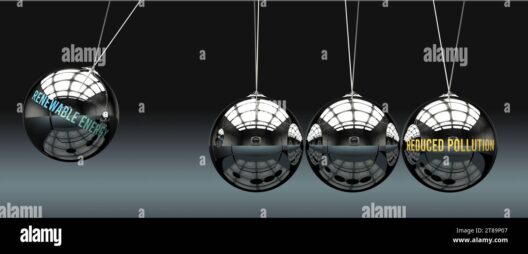Coastal erosion, a natural phenomenon, has become increasingly pronounced in recent decades, prompting concern and fascination. The shores that have long been celebrated for their beauty and serenity are, disturbingly, shifting before our very eyes. Coastal communities often assume that natural forces such as wind, waves, and tidal currents solely dictate the fate of our coastlines. However, a myriad of deeper, more insidious factors are exacerbating erosion rates, with human-caused global warming standing prominently among them.
At its core, coastal erosion refers to the process by which the shoreline is worn away, predominantly through the relentless action of water. While this process is entirely natural, engineer’s calculations and prognostications indicate that the pace has quickened dramatically in the context of contemporary climate dynamics. The factors contributing to this acceleration are multi-faceted and deeply entwined with anthropogenic influences. Rising sea levels, a direct outcome of global warming, serve as one of the principal catalysts for dramatic coastal change.
The relationships between thermal expansion of ocean waters and the melting of polar ice caps intensify the issue of rising sea levels. As temperatures climb, seawater expands, while simultaneously, the melting of glaciers contributes copious volumes of freshwater to the oceans. This dual occurrence has resulted in sea levels rising at an alarming rate, predicted to escalate further in the coming decades. Coastal communities must reckon with the daunting prospect of encroaching waters, bringing with them the promise of intensified erosion.
In parallel, changes to weather patterns also induce variations in wave energy and storm intensity, thereby exacerbating erosion. The increase in the frequency and strength of extreme weather events is a stark reality of climate change. Hurricanes and tropical storms, now more potent due to warmer ocean temperatures, lash coastlines with unprecedented ferocity. The violent swells churn the sands beneath, dismantling the natural structures designed to protect the land. Beaches once deemed stable can be washed away in a single storm, illuminating just how vulnerable our shorelines have become.
Moreover, the metamorphosis of coastal ecosystems presents a complex interplay that complicates the picture of erosion. Mangroves, salt marshes, and coral reefs, natural barriers to erosion, are increasingly threatened. As waters warm and acidify, these vital ecosystems face the dual threats of decay and displacement. Mangroves, for instance, are at risk; their roots, which historically stabilize sediments and protect shorelines, are under siege from both higher sea levels and changing salinity levels. The inability of these ecosystems to adapt rapidly to climate change can result in a cascading effect, where erosion exacerbates as protective barriers dwindle.
Interesting, yet disconcerting, the phenomenon of coastal erosion brings us face to face with the human element. Urban development exacerbates susceptibility to erosion. When human ingenuity dictates that coastal zones become ideal locations for housing, resorts, and ports, important natural defenses are often destroyed in the process. Seawalls and other hard engineering solutions, while seemingly effective in the short term, might prove detrimental in the long run, as they can lead to increased erosion in adjacent areas. Thus, humanity attempts to control nature’s course, often to our detriment.
Rising awareness of the consequences of coastal erosion requires a multifaceted response. Environmental organizations and local governments are beginning to adopt more sustainable practices. Solutions are increasingly focusing on restoring natural coastal habitats, which have traditionally served as buffers against erosion. Efforts to replant mangroves or restore wetland areas can provide dual benefits—protecting coastlines while simultaneously enhancing biodiversity.
Public engagement plays a crucial role in addressing coastal erosion’s new face. Educational initiatives that illuminate the connections between human activity and environmental consequences cultivate better-informed communities. When individuals recognize their collective role in the larger narrative of climate change, robust grassroots movements can emerge. Such groups can champion policies aimed at reducing greenhouse gas emissions and advocate for sustainable practices at local, state, and national levels.
Moreover, technological innovations are transforming how we monitor and understand coastal erosion. Satellite imagery, drones, and sophisticated computer modeling provide invaluable insights into shifting coastlines. This data can lead to more accurate predictions and actionable insights, equipping communities with the information necessary to address the impending challenges posed by climate change.
As we contemplate the future of our shores, it is imperative to consider the interdependence of human actions and the environment. The dual forces of erosion and climate change present an urgent challenge, but they also offer an opportunity for reflection and growth. It compels us to prioritize ecological sustainability over short-term gains. A paradigm shift is necessary, one that recognizes and respects the invaluable services offered by the ecosystems we so often take for granted.
In conclusion, coastal erosion’s new face is a manifestation of the complex interplay between natural forces and human activity. Climate change, propelled by anthropogenic practices, amplifies the forces of erosion that threaten communities and ecosystems alike. It is essential to acknowledge the urgency of this issue and act decisively. Through responsible stewardship, we can protect our shores, ensuring they endure not just for ourselves but for future generations who will also seek solace and inspiration along the ever-changing coastlines. The time to act is now.







